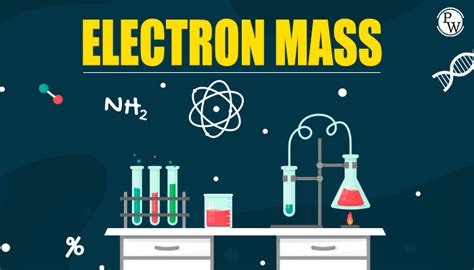Electron Mass in Kilograms: Unraveling the Microcosmic Realm
The electron, a fundamental particle that orbits the nucleus of an atom, is a vital building block of matter. Its mass is an essential property that plays a crucial role in understanding the behavior of atoms and the interactions between subatomic particles. In this comprehensive article, we delve into the electron’s mass and its significance in various fields of science.

The electron mass is a fundamental physical constant that has been meticulously measured and refined over time. According to the 2018 CODATA (Committee on Data for Science and Technology) adjustment, the electron’s mass is:
me = 9.1093837015(28) × 10-31 kilograms (kg)
This incredibly small value highlights the minuscule nature of electrons compared to everyday objects. To put it into perspective, the mass of a single electron is roughly 1/2,000th the mass of a hydrogen atom.
The electron’s mass is crucial for understanding a range of physical phenomena, including:
Atomic Structure
The mass of electrons determines their orbital paths within atoms. The electron cloud model depicts electrons occupying energy levels or shells around the nucleus. The mass of the electron influences its position and behavior within these shells.
Chemical Bonding
Electron mass plays a role in chemical bonding. The electrostatic attraction between electrons and the nucleus governs the formation of ionic bonds. The electron’s mass affects the strength and stability of these bonds.
Particle Interactions
The electron’s mass is involved in particle interactions. In particle accelerators, electrons are accelerated to high energies, and their mass affects their trajectories and the outcomes of collisions.
Beyond fundamental physics, the electron’s mass finds practical applications in various fields:
Electron Microscopy
Electron microscopy utilizes the electron’s small mass and wave-particle duality to generate high-resolution images of atomic structures.
Semiconductor Devices
The electron’s mass influences the electrical properties of semiconductor materials. This knowledge is essential for designing and optimizing electronic devices such as transistors, integrated circuits, and photodetectors.
Medical Imaging
The mass of electrons is used in medical imaging techniques like electron tomography and positron emission tomography (PET). These techniques provide valuable insights into human anatomy and physiological processes.
Inspired by the unique properties of the electron’s mass, researchers are exploring innovative applications:
Quantum Computing
The electron’s mass is a potential building block for quantum computers, which offer unprecedented computational power.
Energy-Efficient Electronics
Understanding the electron’s mass can lead to the development of energy-efficient electronic devices that consume less power and generate less waste heat.
Advanced Materials
The manipulation of electron mass can pave the way for the creation of novel materials with tailored properties for use in optoelectronics, spintronics, and other emerging fields.
| Property | Value |
|---|---|
| Electron Mass (kg) | 9.1093837015(28) × 10-31 |
| Electron Rest Mass Energy (eV) | 511,009.0006(15) |
| Electron Charge-to-Mass Ratio (C/kg) | 1.758820024(5) × 1011 |
| Electron Gyromagnetic Ratio (rad/s/T) | 1.760859618(5) × 1011 |
The electron mass, despite its incredibly small value, holds immense significance in our understanding of the microcosmic realm. It influences a wide range of physical phenomena, from atomic structure to particle interactions. Moreover, the study of the electron’s mass has led to revolutionary applications in science and technology, and it continues to inspire groundbreaking innovations. As researchers delve deeper into the mysteries of subatomic particles, the electron mass will remain a cornerstone of our scientific knowledge and technological advancements.
